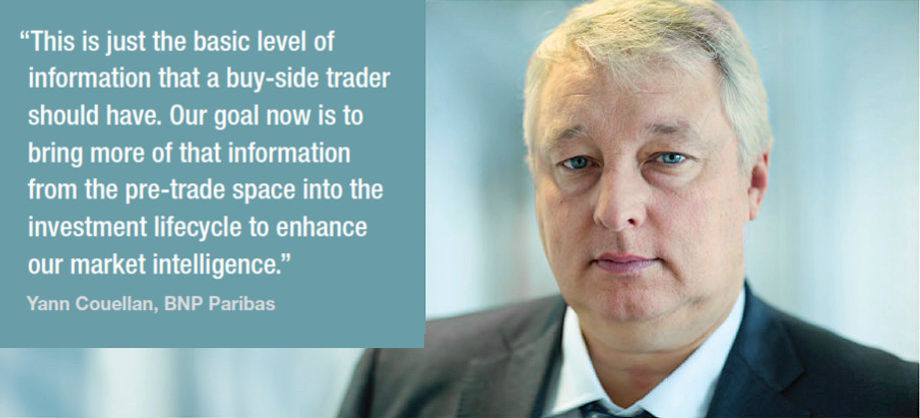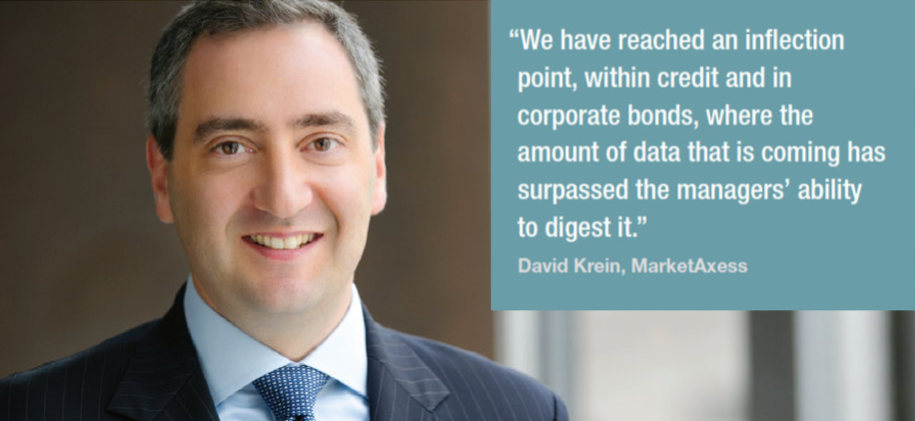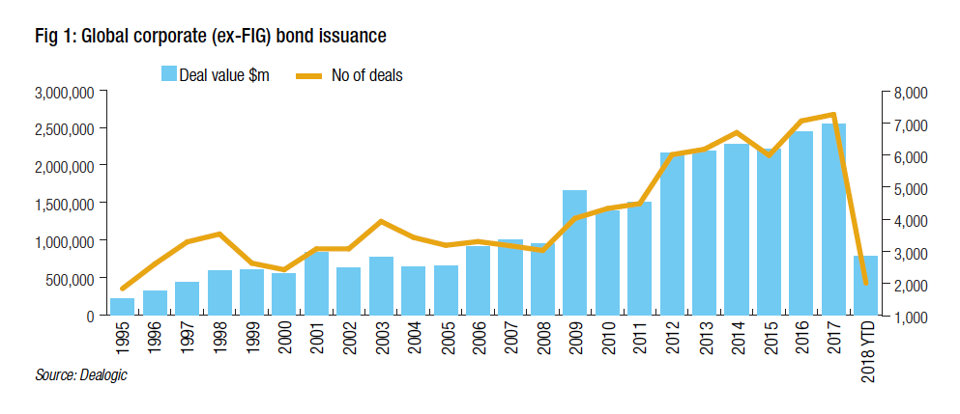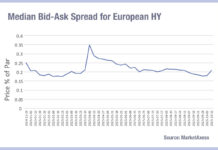Dealer axes: Can’t see the wood for the trees
A proliferation of axes and inventories are making dealer data hard to consume by trading desks. Dan Barnes reports.
The inability to process pricing data for corporate bonds is preventing buy-side traders from finding real opportunities to trade. Data is readily available; broker-dealers, specialist data aggregators, TRACE, Bloomberg data and benchmark providers all give guidance on where a price may be.
In fact there is too much of it. The quality of that information is highly variable, the volume provided by dealers is increasing, and the absence of a standard format makes it hard to compare.

“I think that sell-side data should be more standardised when supplied to buy-side firms,” says Yann Couellan, head of execution at BNP Paribas. “The sell-side have a view on our investment needs and could differentiate their offering on that basis – if the opportunities were more visible through pre-trade data, we could then do much more business.”

David Krein, head of research, MarketAxess, says, “We have reached an inflection point, within credit and in corporate bonds, where the amount of data that is coming has surpassed the managers’ ability to digest it. The noise has grown and the signal that exists within it is very hard to find.”
Seeing the wood for the trees
The growth of information reflects several elements in the credit market. Firstly, there is a widening set of instruments due to the growth in issuance while rates are low (see Fig 1).

Chris White, CEO of market data aggregation tool Bondcliq says, “You are seeing global bond markets triple in their outstanding size in some cases, but with the exception of the US treasury market, nobody can tell you where’s the best bid or best offer at any given time with any certainty.”
Secondly, broker-dealers have seen their fixed income business suffering in a highly competitive market. Providing attractive prices more frequently can potentially allow them to win more business. However, the frequency of updates can vary enormously.

The managing director for fixed income technology at a tier one asset manager says, “We still have dealers sending axes and inventories, but now the biggest firms are sending prices on corporate bonds every three seconds and they are willing to stand up to those levels. That changes the game.”
This impacts the sell side as much as the buy side, because it reduces the overall volume of trading activity, due to the slower processing of information and decision making. Where some dealers are streaming prices, others repeat the same offers for hours at a time, even on liquid bonds. There is also inconsistency in the type of data that is transmitted. That impairs decision making.

“The issue dealers are struggling with is that the buy side cannot home-in on quality prices because the weight of information being sent means it gets messed up with lower quality prices,” says Usman Khan, chief technology officer at pre-trade data aggregator Algomi. “For example, you get two-sided offerings versus axes. Trying to distinguish the two gets hard because they are all coming down the same pipe and getting comingled.”
In an environment in which pre-trade information is fragmented and decentralised, price integrity deteriorates. This is critical for understanding where a desk can trade and also for truly knowing the asset manager’s risk. On the sell side, firms find themselves with an absence of data.
“The dealers have an issue of information malnutrition,” says White. “They do not see pricing information that the buy side at least has the opportunity to organise.”
Axe filtration
Coming to terms with this imbalance of information can be tackled in several possible ways. The data that is currently very disparate and non-standard could be aggregated and supplied to consumers more effectively. A complete feed of data could be provided within a tool to be used by the trading desks. Or, consumers with the capacity to build technology could develop their own systems. From 31 March 2018, Neptune begain charging £16k a year for buy-side firms to receive standardised real-time axe and inventory information.
From a technical point of view, any one of these solutions presents challenges. For large asset managers, building front office technology to directly match the needs of their traders – capturing the right instruments, markets and range of activity for specific funds – is the preferred option.
For example, Wellington Management, which uses a proprietary order management system (OMS), has been able to develop a system in-house which handles data overload, aggregating data from market operators, tier it according to quality, and then focus it down to a point that the firm’s dealers can use it to their advantage.
For trading desks with less direct control over their IT build, using systems they have bought to parse the data and aggregate it is often the best alternative. Many asset managers use their OMS to handle axes and offers from banks, however, due to the volumes and frequency those platforms often struggle to help filter out the noise. There are also commercial data tools. Parsing data is the very first step to understanding it; in addition traders need the workflow to assess the characteristics of quotes and understand whether these are data points or levels that they should be paying attention to.
Algomi has several offerings in the pre-trade space that are intended to allow buy- and sell-side firms to better find the other side to a trade.
“Our ALFA product solves this problem by consuming feeds and providing the buy side with the capability to filter them in real time,” says Khan. “The entire solution consists of a partnership with different companies coming together, while we have built the technology stack to make it work.”
Krein notes that most managers see a sliver of the market but lack a wider view of the prices being quoted.
“Some managers are bigger than others; a few actually see everything, but that’s just a handful,” he says. “What we have done recently is take in our window into the market, the MarketAxess trading platform, and built our own pricing resource, Composite Plus, for managers to facilitate price discovery and participation in our all-to-all platform for trading. That brings the manager’s ability to quickly digest a growing pool of data and put it to work very effectively.”
Bondcliq has taken another route by pulling dealer quotes together, so that they can assess the prices they are making in a way that might have only been visible to the buy side previously.
“We organise the data in a way that order flow will be linked to pricing proficiency,” says White. “If you do that, then the dealers will be empowered by making prices, instead of the current environment in which the dealers, by consistently making prices, are actually creating a market data deficit for themselves.”
Taking a standardised approach to understanding the prices that dealers are making not only frees up the front office by removing the workload necessary to process the information, it can be used to better support other functions within the asset manager, including risk and portfolio management
“This is just the basic level of information that a buy-side trader should have,” says Couellan. “Our goal now is to bring more of that information from the pre-trade space into the investment lifecycle to enhance our market intelligence.”
Standardisation could also create greater equality of pricing. Broker-dealers price over-the-counter trades differently according to the client, in order to better support the economics of secondary markets based upon order volume and the value of a relationship. Making prices more transparent will level the playing field for many asset managers.
“It must be equal access to the pricing information, which means that everybody sees the same pricing on the same bond at the same time,” says White. “If you don’t have that you can never get the price integrity you need to improve trading efficiency.”
©Markets Media Europe 2025













